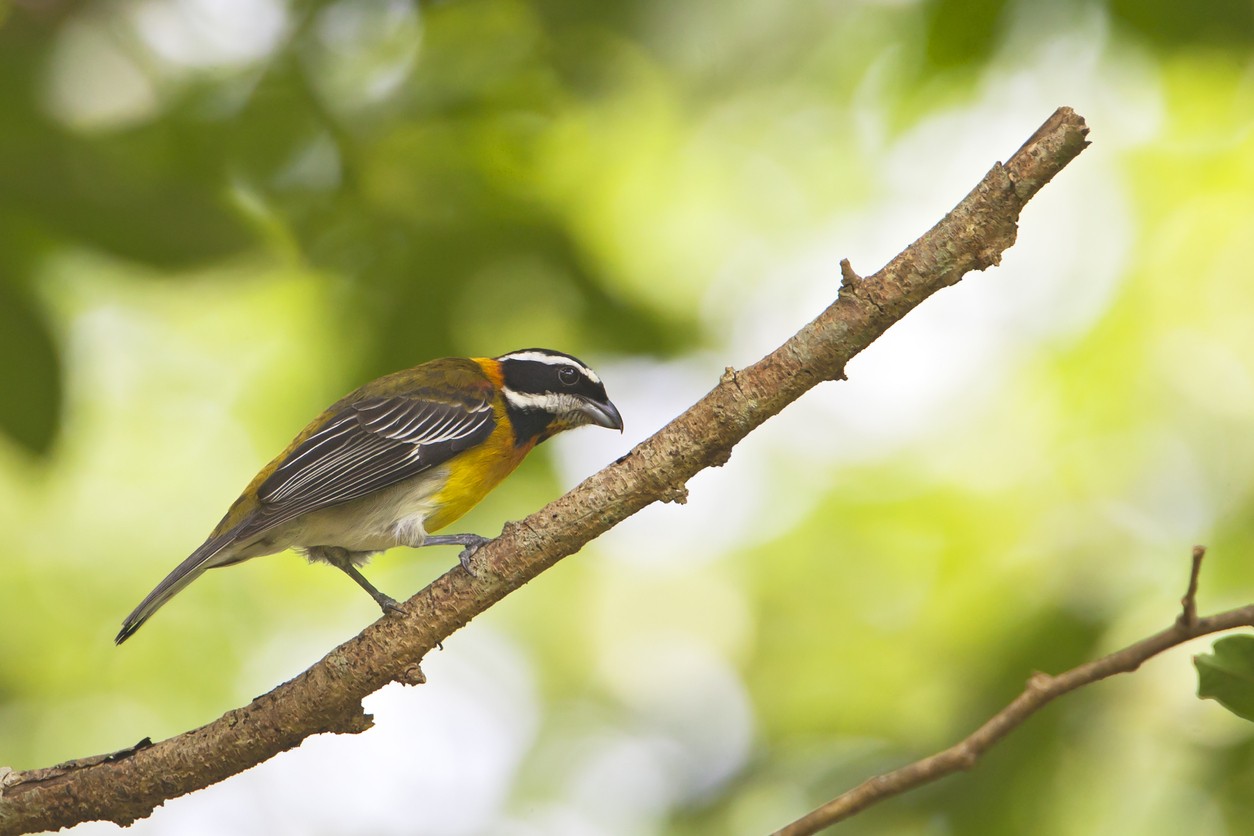Puerto Rican Spindalis
A species of Stripe-headed Tanagers Scientific name : Spindalis portoricensis Genus : Stripe-headed Tanagers
Puerto Rican Spindalis, A species of Stripe-headed Tanagers
Botanical name: Spindalis portoricensis
Genus: Stripe-headed Tanagers
Content
Description General Info

Description
The Puerto Rican spindalis exhibits sexual dimorphism with males being brightly colored and females being dully colored. Males are green colored above with an orange neck and chest. They have a black head with two white stripes running across it, with one above and one below the eyes. The tail and wings are gray to black with small white stripes at the tips. In contrast, the female is a dull olive-green color with slightly noticeable white stripes. Sexual dimorphism is also noticeable in weight and size. Females are slightly heavier but smaller in length than males. The male's weight ranges from 22.5 to 37.0 grams with an average of 30.8 grams while the female's ranges from 28.0 to 41.1 grams with an average of 33.5 grams. The length of the male's wings ranges from 82 to 88.5 mm with an average of 85.2 mm while the female's range from 80 to 85.5 mm with an average of 82.6 mm. The length of the male's tail ranges from 59 to 68 mm with an average of 63.3 mm while the female's range from 56 to 65.5 mm with an average of 60.6 mm. 
Size
16 cm
Nest Placement
Shrub
Feeding Habits
Puerto Rican Spindalis primarily consumes fruits, seeds, leaves, and insects. Exhibiting varied foraging methods, these birds adaptively search for food at different times. They possess specialized dietary preferences, distinct in their diverse intake.
Habitat
All elevations wherever fruits are in abundance, urban areas, university campuses, more traditional woodland, forested habitats, humid areas with thickets and lower vegetation near forested areas, areas with patches of trees, especially plantations
Dite type
Frugivorous
General Info
Feeding Habits
Bird food type

Fruit
Behavior
The Puerto Rican spindalis are usually found in pairs but may travel in small flocks. These birds also engage in a behavior called mobbing. This is when a flock of birds, from one or more species, attack a known predator, usually to defend their eggs or hatchlings. Such behavior has been observed being directed against the Puerto Rican boa by immature Puerto Rican spindalis. The vocalization of the Puerto Rican spindalis is not as complex as that of other Spindalis species; only the songs of S. dominicensis are less elaborate. As with all Spindalis, the males emit high pitched sounds at 8 kHz or higher, usually from treetops high above the ground. Females, on the other hand, sing "whisper songs" usually from dense areas close to the ground. The most common vocalization is described as a "continuing series of high-pitched, thin, sibilant notes, given in a rhythmic pattern." Other vocalizations include a fast tweet and a short chi chi chi. 
Distribution Area
The Puerto Rican spindalis is currently found more commonly in plantations than in their natural habitat, the forests of Maricao and the El Yunque National Forest. It may also be found in gardens, scavenging for flower nectar, and other areas where fruits are grown. It can be attracted by a sugar solution. It is distributed throughout the entire main island of Puerto Rico and is rarely found above 1000 meters in elevation. 


Scientific Classification
Phylum
Chordates Class
Birds Order
Perching birds Family
Tanagers Genus
Stripe-headed Tanagers Species
Puerto Rican Spindalis